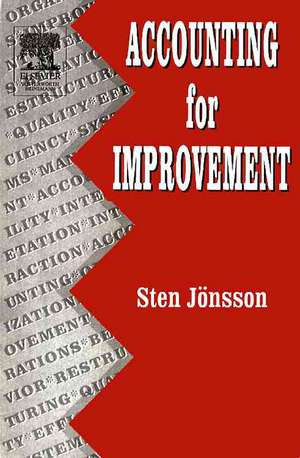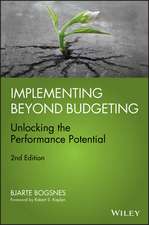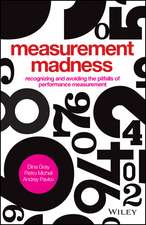Accounting for Improvement
Autor Sten Jonssonen Limba Engleză Paperback – 14 oct 2004
Several broadly applicable lessons can be learnt, among them: how companies can strengthen their competitive base by patient improvement; how people with operative jobs can take command of their work situation and improve it in quality as well as efficiency.
New bottom-up, people-orientated, empirically-founded approaches to decentralised participative management demonstrate a place for individuals and teamwork in today's "lost relevance" and "smart machine" environment.
| Toate formatele și edițiile | Preț | Express |
|---|---|---|
| Paperback (1) | 566.06 lei 6-8 săpt. | |
| Emerald Publishing – 14 oct 2004 | 566.06 lei 6-8 săpt. | |
| Hardback (1) | 383.52 lei 5-7 săpt. | |
| ELSEVIER SCIENCE – 19 mai 1996 | 383.52 lei 5-7 săpt. |
Preț: 566.06 lei
Preț vechi: 636.02 lei
-11% Nou
Puncte Express: 849
Preț estimativ în valută:
108.33€ • 112.80$ • 91.55£
108.33€ • 112.80$ • 91.55£
Carte tipărită la comandă
Livrare economică 10-24 martie
Preluare comenzi: 021 569.72.76
Specificații
ISBN-13: 9780080446080
ISBN-10: 0080446086
Pagini: 250
Dimensiuni: 152 x 229 x 356 mm
Greutate: 0.38 kg
Editura: Emerald Publishing
ISBN-10: 0080446086
Pagini: 250
Dimensiuni: 152 x 229 x 356 mm
Greutate: 0.38 kg
Editura: Emerald Publishing
Public țintă
For academics and researchers in behavioural accounting, organisational design and information systems; Doctoral MBA and other masters students with action research interests; academic libraries, information systems designers; project leaders in quality and productivity improvement.Cuprins
A preview: controlling through trust. Control through practice and understanding. The context: Swedish management style, institutions and our knowledge of participation and budget control. Controlling and communicating. Controlling through problem solving. Controlling through dialogue. Controlling through local planning. Controlling through competence. Controlling by words. Conclusion. References.





















